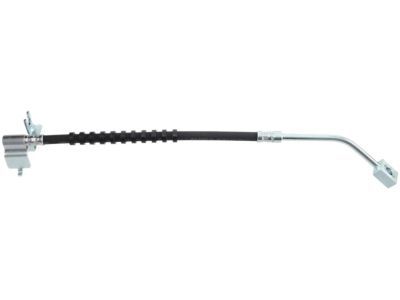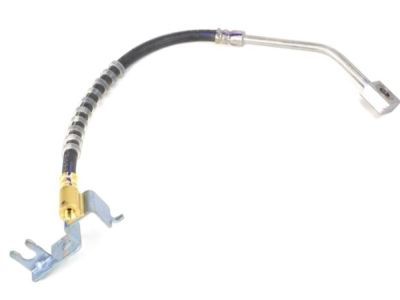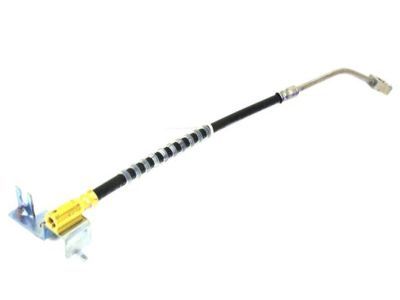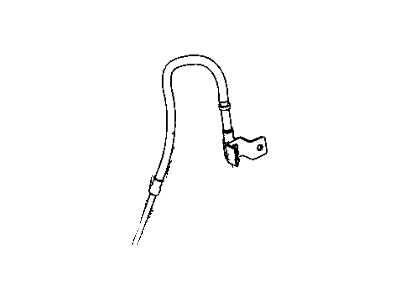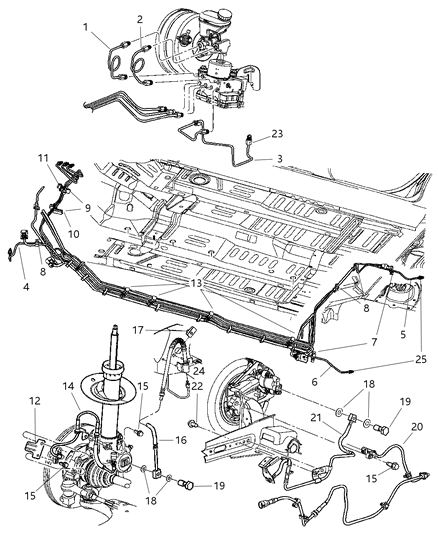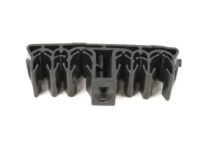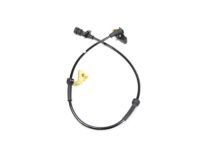About every six months, with the vehicle raised and securely placed on jack stands, inspect the flexible hoses connecting the steel brake lines to the front and rear brake assemblies for cracks, chafing, leaks, blisters, and other damage, as these are crucial parts of the brake system requiring thorough examination with a light and mirror. If any defects are found, replace the hose with a new one. Begin by cleaning dirt from the hose ends, then disconnect the brake line from the hose fitting, ensuring not to kink the metal line; if the fitting is frozen, use penetrating oil to loosen it. Separate the metal line from the connection and pull the flexible hose through the bracket, plugging the metal line to prevent fluid loss. Unscrew the banjo bolt at the caliper to disconnect the hose, discarding the sealing washers. Attach the new brake hose to the caliper using new sealing washers and tighten the banjo bolt to the specified torque. Insert the other end of the new hose through the bracket, ensuring it is not kinked or twisted, then attach the metal line and tighten the fitting nut securely. Check that suspension or steering components do not contact the hose, having an assistant push down on the vehicle while observing for interference, and if replacing a front hose, ensure it does not interfere with the steering linkage or knuckle during lock-to-lock turns. Use the correct parts for brake line replacement, avoiding copper tubing, and purchase steel brake lines from a dealer or auto parts store. Prefabricated brake lines with flared tube ends and installed fittings are available and may be bent to proper shapes. When installing the new line, ensure it is well supported in brackets with adequate clearance from moving or hot components, tightening the fittings securely. After installation, check the master cylinder fluid level, add fluid as necessary, bleed the brake system, and carefully test the brakes before returning the vehicle to normal operation.
Posted by MoparPartsGiant Specialist 
